Basque brand, Larrun is preparing to launch its second generation of Made in France electric bikes, which we have tested in preview! Here is our feedback.
The heat is gone, no more Gorilla electric bike rides on the shores of the Landes beach. Back to everyday life for the home-work commute, with more classic, but no less interesting, e-bikes, the Larrun.
A new brand that wants to stand out
To meet them, you don’t have to go far from Landes, because the brand comes from Anglet. Larrun is in reference to the Basque name La Rhune, this mountain nestled between France and Spain.
A Basque brand of electric bikes may not be so common, but it’s not a first either since the high-end Coleen brand also came from this region. And if we take a closer look at the range, the names of the new bikes are typically Basque: Kalea, Karrika, Asko…
This local anchorage was born in 2021 via a founder who is not from the country, similarity with Gorilla. Gilles Labrude (the name is close, coincidence?), comes from afar, and has in the meantime launched Gorille Cycle’s competitor: the company Maa. Then, he had the wish to sell bikes far from beach bikes or cruiser swarming the coasts. And yes, there are not only tourists, but also locals. They need a means of transport covering too long distances on foot, without becoming dependent on the car.
The first generation of Larrun bikes therefore emerged from this idea, having conventional electric city bikes. The manager admits, there is nothing very original or French about them: the company is new to the business and must initially source its supplies from Asia. These are therefore assemblies of generic parts, without removing the serious character of the final bikes, which remain affordable. But very quickly, Gilles and his team of around ten people imagined the second generation, this time with blue-white-red inside.
A transition phase and flax fiber coming soon
Like Gorilla, the new VAEs draw on local and French. Larrun shows it with its silver bird logo, an echo of the famous Saint-Etienne Hirondelle bicycles which have now disappeared.

Four new references are thus arriving in the so-called “Premium” range, very different from the old “Essential” offer. The Karrika is the urban one, the Kalea is its high-performance cousin, the Oreka is the sportier one, and the Asko is the cargo bike. Note that the names are Basque, Kalea meaning “street” or Asko “many”.
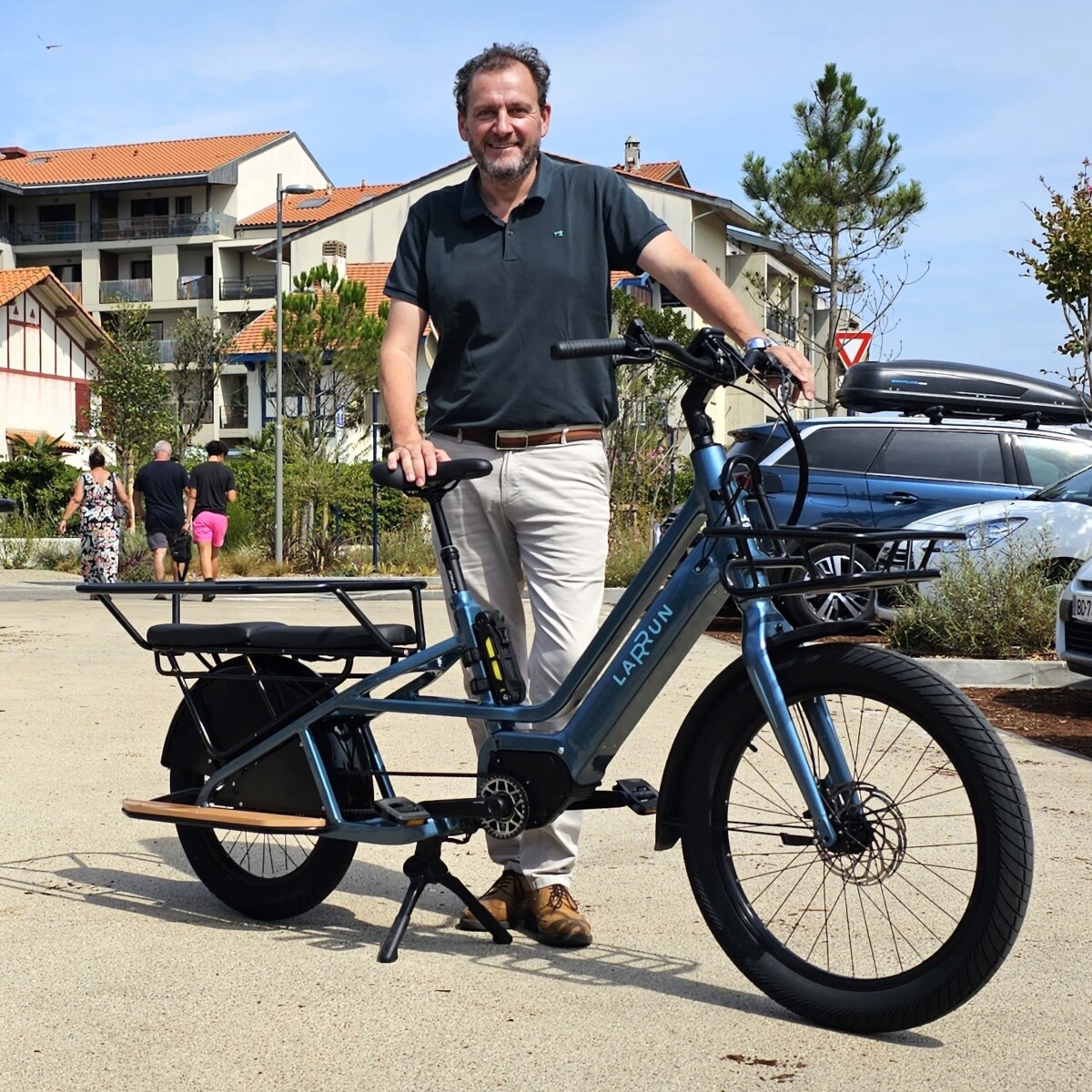
We discovered this Larrun Asko at the beginning of July, during the Pro Days in Paris. This electric recumbent bike caught our attention, with its modern design, its robust appearance and its Valeo engine like the Kalea. In addition, one copy even had a flax fiber frame.
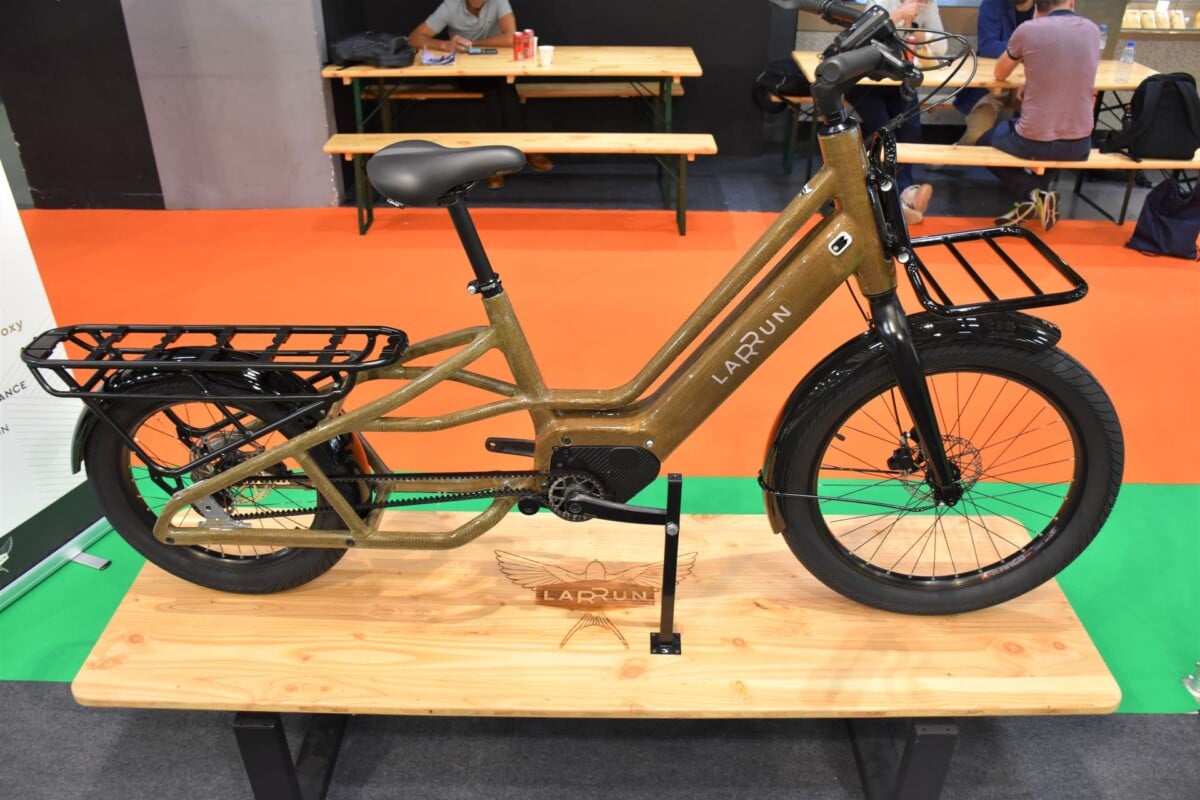
This material of plant origin – therefore greener than carbon fiber – is also very light and resistant compared to classic aluminum or steel. The objective for Vincent Labrune is to market this type of frame from 2024, across the entire Premium range.
Made in France, and soon 100%?
This frame is also French, in its design and manufacturing, as is the linen used. The current frames remain in aluminum, designed in-house, but imported from Asia. That of Karrika, Kalea and Asko also includes three details unique to Larrun.
The first is the logo, a reference to the Saint-Etienne Hirondelle cycles as already mentioned, with the small upper bar of the low frame model. The other is more subtle: white stripes appear on the bars, representing a 6 and a 4, or 64, like the Pyrénées-Atlantiques department.
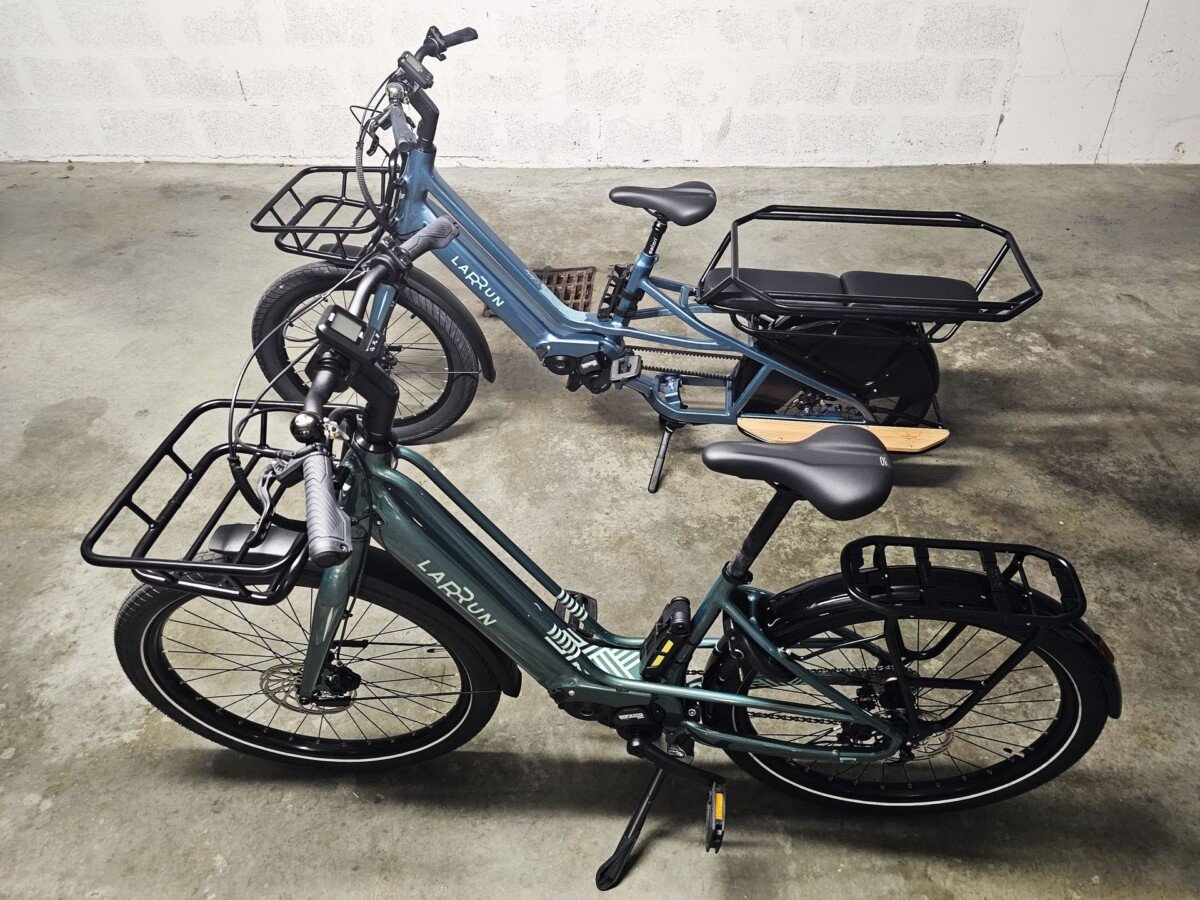
The battery is also assembled in France, at Neogy near Bordeaux in Mérignac (city of the C du Cycle brand). With a French frame, motor and battery, we already obtain more than half the value of the bike, Larrun being able to promote its Made in France bikes.
For the rest, everything is imported, like the stem or the tires. The brakes are German, and will eventually become French (via Bontaz?). The objective is to reach 100% French in 2025. It is very ambitious, especially because production will take off, with 500 units planned this year, 2,500 next year and 6,000 in two years. We have already come across 100% French models, like at Cygo, but it was still in prototype form.
Riding Larrun bikes
Well before their launch, we were able to ride with two prototypes of the future Larrun. The brand lent us a copy of the Kalea electric bike, and one of the Asko elongated cargo.
The Larrun Kalea is the more high-end of the two “Premium” city bikes. The big difference is in the mid-motor and drivetrain, as the Karrika has a 40Nm Shimano Steps E5000 with an Acera 8-speed derailleur. Here, the Valeo Cyclee is a somewhat unusual automatic transmission engine, because it is very torquey (110 Nm here), but noisy, because it is geared.
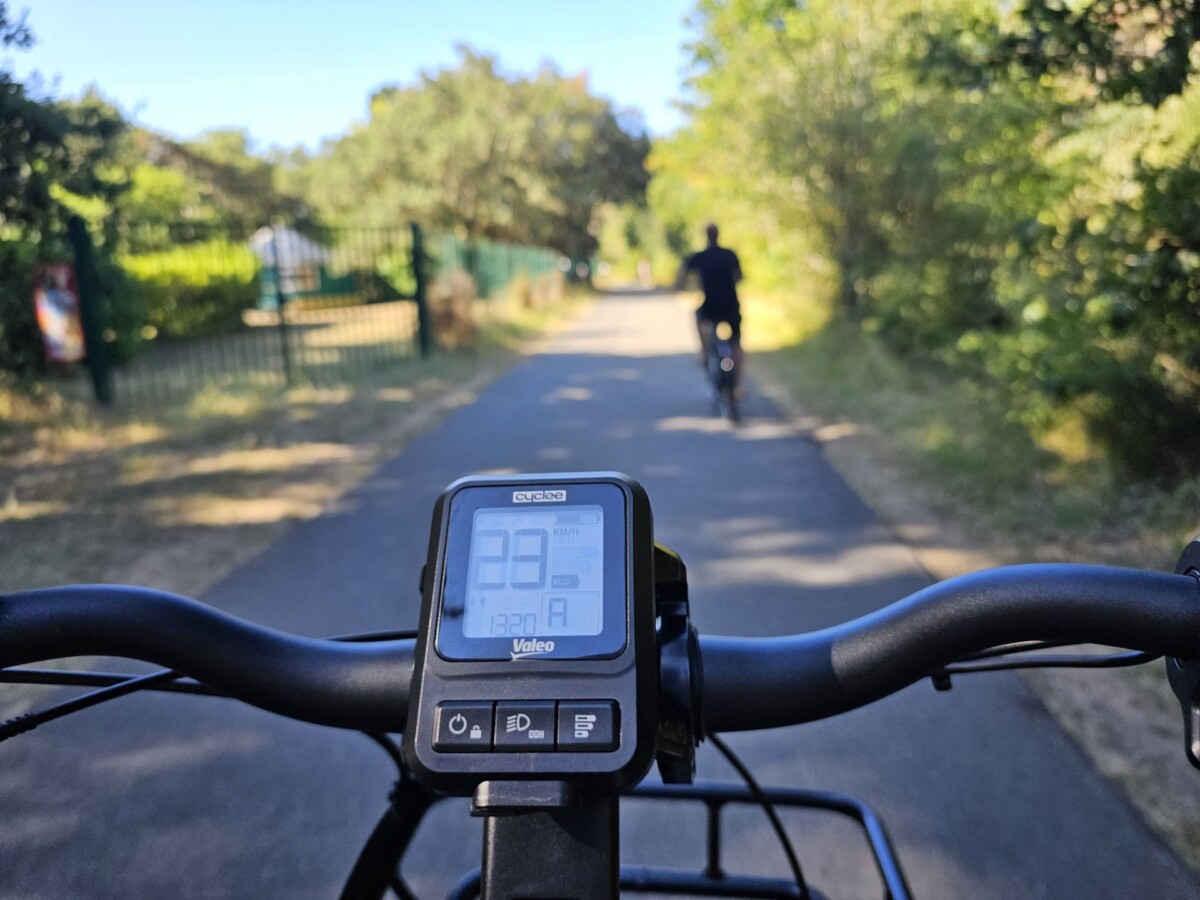
You get used to it a little after a few days, because you get caught up in the enthusiasm of the block, although with a little latency at the first pedal stroke. The fairly flat Landes ground during our test did not allow us to test the limits of the cycle, but a steep climb from the garage poses no problem.
The 7 gears are automatic, varying according to speed and pedaling cadence, but can also be shifted manually. This is useful in case of cruising speed/cadence to have a perfect cadence. You can also choose from three levels of assistance, including automatic.
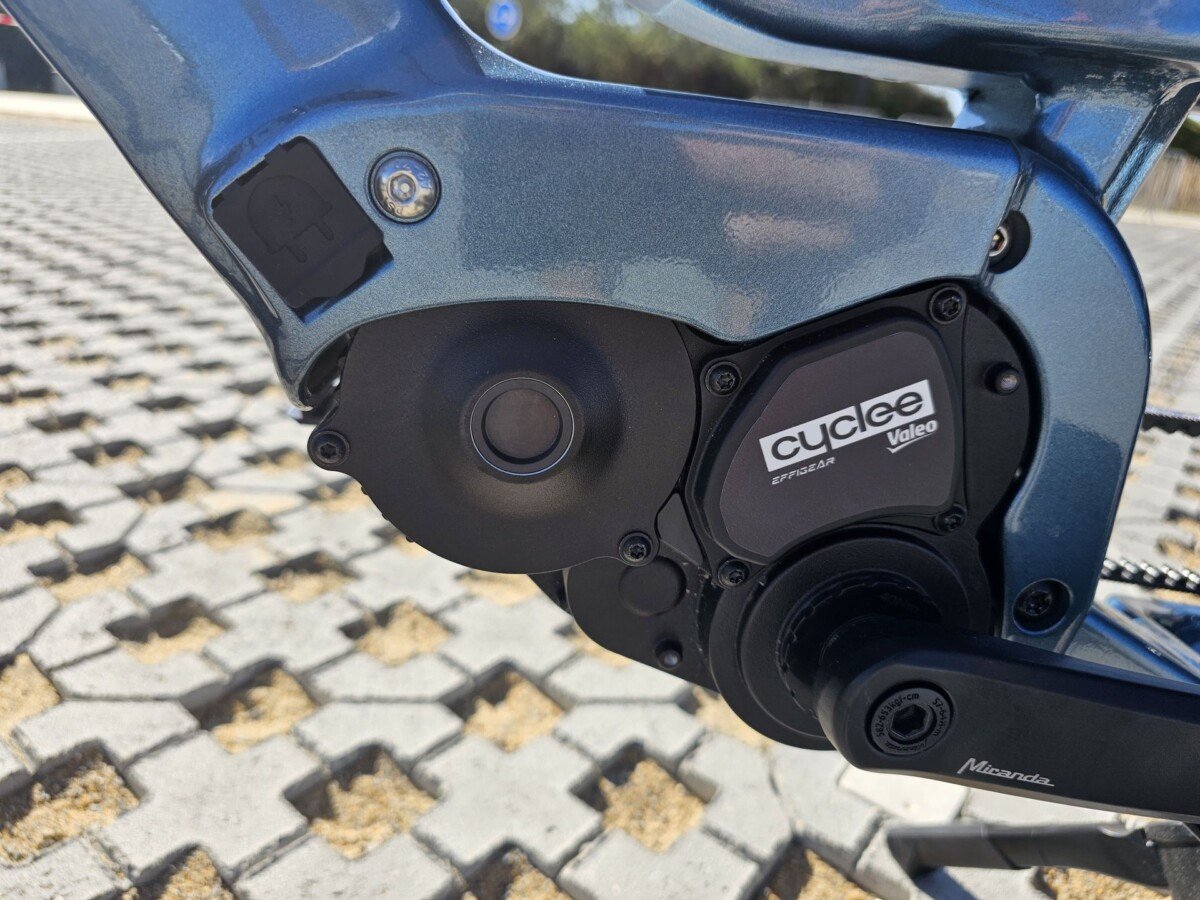
The other particularity of the engine is to give the Larrun Kalea a low center of gravity and at the level of the crankset. The Basque electric bike is therefore quite maneuverable despite its size, the frame exudes solidity, all associated with large tires. These are not too much, Schwalbe Moto X with good damping, but we regret the absence of suspension on the fork or on the saddle, however comfortable.
Another weak point, the battery is welded into the tube, therefore not removable, but with a generous capacity of 630 Wh.

Source: Matthieu Lauraux for Frandroid

Source: Matthieu Lauraux for Frandroid

Source: Matthieu Lauraux for Frandroid
On the other hand, there is nothing to complain about either the very powerful Magura MT Sport brakes or the equipment. The Kalea has a double kickstand, tubular mudguards, front and rear luggage racks, a wheel lock and battery-linked lighting. This paraphernalia, however, has a price: 4,850 euros! Yes, but it is the price of Made in France, of high-end components, and especially of the Valeo unit which should not be cheap.
A cargo bike ready to pass the Basque passes
Close cousin but with an elongated rear structure, the Larrun Asko has similar characteristics. Long version of the Kalea, it increases the total load to 205 kg compared to 160 kg, and is of course more practical in terms of transporting loads and people. The large MIK and QL3 compatible rear luggage rack allows two children and up to 70 kg on its own.
Like most other electric recumbent bikes, grab bars, cushions, and footrests are optional. However, the brand adds a telescopic saddle as standard, essential on a cargo ship, as does the double stand.
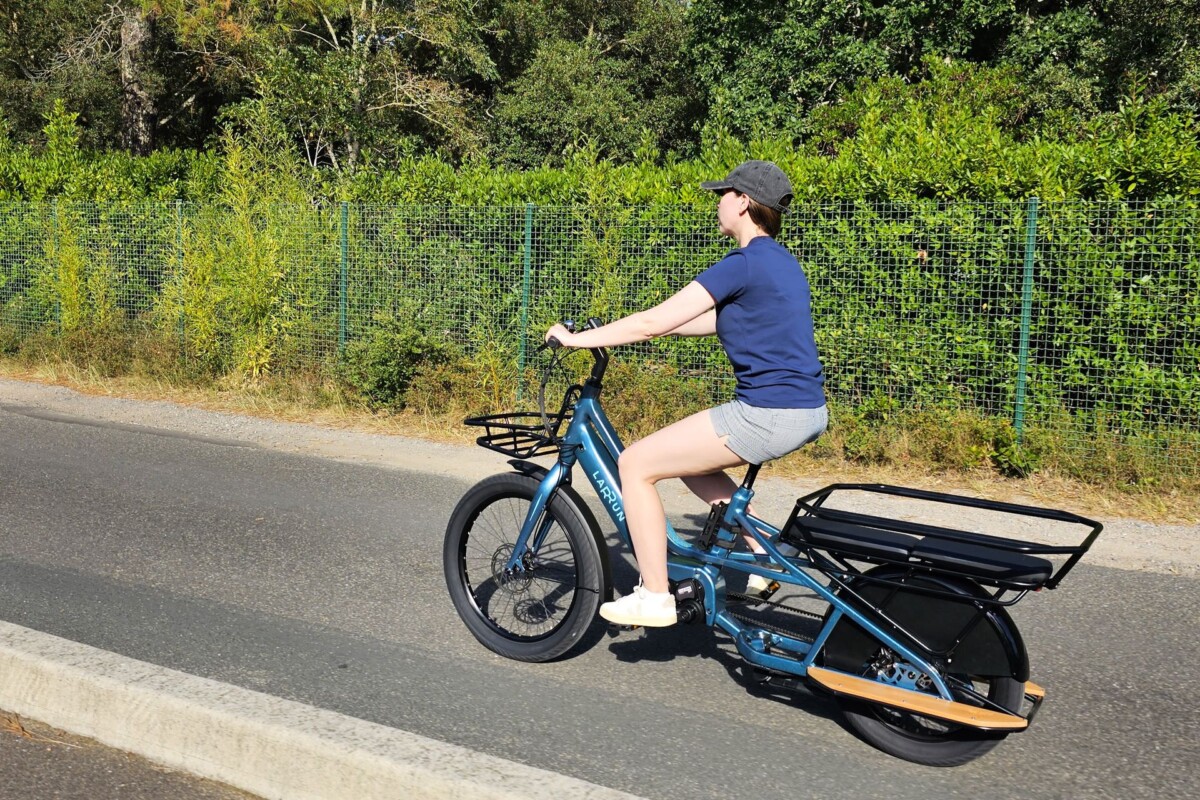
In use, the choice of a 24-inch front wheel is better for maneuverability (than the 27.5 inches of the Kalea), when the rear drops to 20 inches to cushion the weight. It still remains quite heavy to handle due to the significant weight (around 40 kg) and dimensions.
The same engine equips the Larrun Asko, but with the full potential of 130 Nm, erasing any feeling of heaviness. The torque curve starts very early in order to launch the bike without forcing, even uphill, but to the detriment of the eardrums, making even more noise than on the Kalea. Comfort is a little average, below the Kalea, and would have deserved a spring saddle at a minimum to cushion certain big shocks.

Source: Matthieu Lauraux for Frandroid

Source: Matthieu Lauraux for Frandroid

Source: Matthieu Lauraux for Frandroid
There is nothing to complain about the equipment of the bike either, with the same brakes which are more than enough to stop. The Larrun Asko is, like the other VAE, quite expensive because it starts at 5,900 euros, not including accessories (300 euros minimum estimated).
A well-stocked range of electric bikes
Launched in October 2023, the new Larrun Kalea and Asko will therefore join the Karrika, priced from 3,440 euros. The Oreka will only arrive in 2024, at a still unknown price, with a Shimano motor, in two semi-open and closed frames.
The “Essentielle” range starts at 1,340 euros with the folding Verdier, compared to 1,890 euros for the open Préville model. With a larger battery but a front motor, the Beaumont costs 2,090 euros, and the VTC Bastide suspended with a central engine asks 2,250 euros.
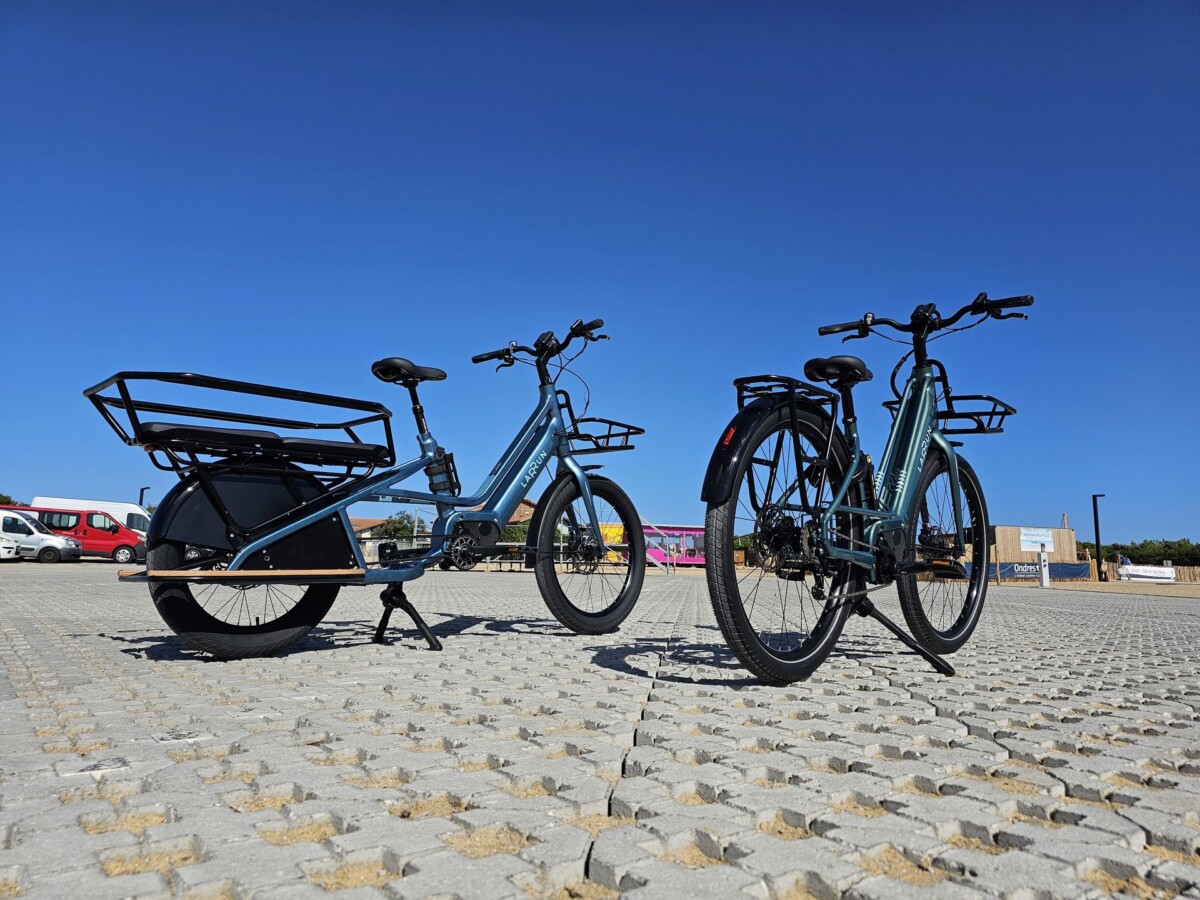
The Larrun are available only from the brand’s approximately 45 resellers, the majority of which are in the southwest, on the Atlantic coast, as well as a handful in Paris.
